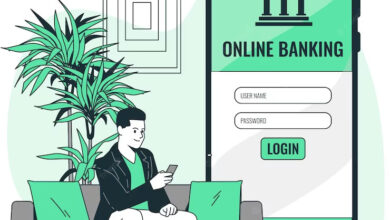
Cloud Misconfiguration Exposes Android & iOS User Data
Cloud misconfiguration leads to data exposure of Android and iOS users – a chilling reality in today’s interconnected world. We’re all using apps daily, trusting them with our personal information, location, and even financial details. But what happens when the cloud infrastructure supporting these apps is poorly secured? This post dives into the scary specifics of how misconfigured cloud services leave Android and iOS users vulnerable, exploring the types of misconfigurations, the attack vectors used, and ultimately, how we can protect ourselves and our data.
From insecure APIs to weak authentication, the vulnerabilities are numerous and the consequences can be devastating. We’ll examine real-world examples of data breaches stemming from cloud misconfigurations, comparing the impact on Android and iOS users. This isn’t just a technical deep dive; it’s about understanding the very real risks we face and the steps we can take to minimize them.
We’ll look at practical mitigation strategies, best practices for developers, and the legal implications of failing to secure user data.
Types of Cloud Misconfigurations Leading to Data Exposure

Cloud misconfigurations represent a significant threat to the security of Android and iOS applications. Improperly configured cloud services can expose sensitive user data, leading to breaches and significant reputational damage for developers. This post will explore common misconfiguration types, their vulnerabilities, and the impact on both Android and iOS users.
Common Misconfiguration Types and Associated Vulnerabilities
Several common cloud misconfigurations frequently lead to data exposure. These misconfigurations often stem from a lack of understanding of cloud security best practices, inadequate access controls, or insufficient monitoring. Understanding these vulnerabilities is crucial for developers to build secure applications.
Storage Bucket Permissions
Incorrectly configured storage buckets (like AWS S3 or Google Cloud Storage) are a prime example. Publicly accessible buckets, lacking appropriate access control lists (ACLs), allow unauthorized individuals to download sensitive user data, including personally identifiable information (PII), financial details, and potentially even application source code. The impact on both Android and iOS users is identical: complete exposure of their data.
For example, an app storing user images in a publicly accessible bucket would expose those images to anyone.
Insufficient IAM (Identity and Access Management) Controls
Inadequate IAM configuration grants excessive permissions to users or services. This can allow malicious actors to access and modify data or even deploy malicious code. On both platforms, the result is the same: unauthorized access to sensitive data and potential compromise of the application itself. For instance, an overly permissive role could allow a compromised employee to access all user data.
Unsecured APIs
Unsecured or poorly secured APIs (Application Programming Interfaces) are another common source of vulnerabilities. Without proper authentication and authorization mechanisms, attackers can access and manipulate sensitive data through the API. The impact is consistent across Android and iOS: unauthorized data access and modification, potentially leading to data breaches or account takeovers. For example, an API lacking proper authentication could allow an attacker to access user profiles and modify their information.
Lack of Data Encryption
Failing to encrypt data both in transit and at rest significantly increases the risk of data exposure. If a data breach occurs, unencrypted data is readily accessible to attackers. This impacts both Android and iOS users equally: the confidentiality of their data is compromised, and the risk of identity theft or financial fraud increases significantly. For example, storing user passwords in plain text exposes them to immediate compromise.
Misconfigured Serverless Functions
Serverless functions, while offering scalability and convenience, can introduce security risks if not properly configured. Incorrect permissions or lack of proper input validation can lead to vulnerabilities. The impact on Android and iOS users is again identical: unauthorized access to data processed by the function or even execution of malicious code within the function’s context. For example, a serverless function processing payment information without proper encryption could expose sensitive financial details.
Comparison of Misconfiguration Types, Severity, and Impact
| Misconfiguration Type | Severity | Impact on User Data | Mitigation Strategies |
|---|---|---|---|
| Publicly Accessible Storage Buckets | High | Complete data exposure | Implement proper access control lists (ACLs), use encryption, and regularly audit bucket permissions. |
| Insufficient IAM Controls | High | Unauthorized data access and modification | Implement the principle of least privilege, regularly review and update roles and permissions, and utilize multi-factor authentication (MFA). |
| Unsecured APIs | High | Unauthorized data access and modification | Implement robust authentication and authorization mechanisms, use HTTPS, and validate all inputs. |
| Lack of Data Encryption | High | Compromised data confidentiality | Encrypt data both in transit and at rest using industry-standard encryption algorithms. |
| Misconfigured Serverless Functions | Medium to High | Unauthorized data access or execution of malicious code | Implement proper authentication and authorization, validate all inputs, and regularly review function permissions. |
Data Exposure Vectors in Mobile Apps

Cloud misconfigurations don’t just leave your servers vulnerable; they create gaping holes in the security of your mobile applications, directly exposing sensitive user data on Android and iOS devices. This happens because mobile apps often rely heavily on cloud services for data storage, processing, and user authentication. When these cloud services are misconfigured, the carefully constructed security walls around user data crumble, leaving it readily accessible to malicious actors.Misconfigured cloud services provide malicious actors with various avenues to access sensitive data.
These vulnerabilities are often amplified by the inherent complexities of mobile app development and the wide range of cloud services integrated into modern applications. Understanding these attack vectors is crucial for developers and security professionals to proactively mitigate risks.
Insecure APIs
Improperly secured Application Programming Interfaces (APIs) are a primary vector for data exposure. APIs are the messengers between mobile apps and cloud services. A misconfigured API might lack proper authentication mechanisms, allowing unauthorized access to data. For example, an API endpoint that doesn’t require any authentication could allow anyone to retrieve all user data simply by making a request.
Seriously worrying news about cloud misconfigurations exposing Android and iOS user data highlights the urgent need for secure app development. Building robust, secure apps requires careful planning, and that’s where exploring options like domino app dev the low code and pro code future becomes crucial. Ultimately, better development practices are key to preventing these kinds of data breaches affecting millions of mobile users.
Another example would be an API that uses easily guessable or hardcoded API keys, effectively rendering any authentication useless. This allows attackers to bypass security measures and directly access sensitive information such as user profiles, location data, financial details, and health records.
Weak or Missing Authentication
Robust authentication is fundamental to mobile app security. However, cloud misconfigurations can weaken or entirely bypass authentication processes. This could involve storing API keys or passwords insecurely in the cloud, making them easily accessible to attackers. A lack of multi-factor authentication (MFA) also significantly increases the risk of unauthorized access. Even seemingly minor flaws, like weak password policies or insufficient session management, can create exploitable vulnerabilities.
An attacker could exploit these weaknesses to impersonate legitimate users and gain access to their data.
Insufficient Data Encryption
Data at rest and in transit must be encrypted to protect its confidentiality. Cloud misconfigurations often involve a failure to properly encrypt data, leaving it vulnerable to interception and decryption. This could be due to a lack of encryption altogether, the use of weak encryption algorithms, or improper key management. For example, storing sensitive user data in a cloud database without encryption allows any attacker who gains access to the database to easily read and steal the data.
The consequences are severe, as this directly exposes highly sensitive information without any protection.
Lack of Authorization Controls, Cloud misconfiguration leads to data exposure of android and ios users
Even with proper authentication, authorization controls are essential. Cloud misconfigurations can lead to situations where authenticated users have excessive privileges, allowing them to access data they shouldn’t. This might be due to improper role-based access control (RBAC) implementation or inadequate permissions management. For example, a standard user might be inadvertently granted access to administrative functions, enabling them to view or modify sensitive data beyond their intended scope.
This can lead to data breaches caused by either malicious intent or accidental exposure.
Consequences of Data Exposure
The consequences of data exposure resulting from cloud misconfigurations can be severe and far-reaching. Privacy violations, leading to identity theft, financial losses, and reputational damage, are common outcomes. Financial losses can result from unauthorized access to payment information or the exploitation of vulnerabilities for financial gain. Reputational damage can severely impact a company’s brand and customer trust, leading to significant long-term consequences.
Legal ramifications, including hefty fines and lawsuits, are also a real possibility. The impact extends beyond financial and legal concerns; it can erode public trust and negatively affect user engagement.
Data Breach Flowchart
Imagine a flowchart with these steps:
1. Cloud Misconfiguration
A mobile app uses a cloud database with insecure access controls.
2. Attacker Discovery
A malicious actor discovers the misconfiguration through vulnerability scanning or other means.
3. Unauthorized Access
The attacker exploits the misconfiguration to gain access to the database.
4. Data Exfiltration
The attacker downloads sensitive user data (e.g., user profiles, payment information).
5. Data Breach
The data breach is discovered, potentially by the app developer or users themselves.
6. Investigation and Remediation
The breach is investigated, the vulnerability is patched, and measures are taken to mitigate the damage.
Impact on User Data: Cloud Misconfiguration Leads To Data Exposure Of Android And Ios Users
Cloud misconfigurations in mobile apps, regardless of whether they target Android or iOS, can lead to significant data breaches with varying degrees of severity. The type and extent of the damage depend heavily on the specific data stored, the app’s design, and the security architecture of the underlying operating system. While both platforms face similar risks, differences in their security models and user behaviors can influence the impact of a breach.The consequences of cloud misconfigurations extend far beyond simple inconvenience.
Exposed user data can be used for identity theft, financial fraud, targeted phishing attacks, and reputational damage for both the users and the app developers. Understanding these differences is crucial for developers and security professionals to implement effective mitigation strategies.
Data Exposure Differences: Android vs. iOS
Android and iOS, despite both being mobile operating systems, have distinct security architectures that affect how vulnerable they are to cloud misconfigurations. Android, with its more open nature and wider device fragmentation, often presents a larger attack surface. Conversely, iOS’s more controlled environment and tighter integration with Apple’s ecosystem can offer some inherent protection, although it’s not immune to vulnerabilities.
The types of data exposed also differ. For example, while both platforms might expose location data, the depth and detail of this data might vary. Similarly, the level of access to personal contacts and media files can also differ significantly.
Examples of Data Breaches
Several high-profile data breaches have been linked to cloud misconfigurations affecting both Android and iOS apps. For instance, a hypothetical scenario could involve a misconfigured cloud storage service used by a ride-sharing app. In this case, an Android app might expose user location data, trip details, payment information, and driver identification details. An iOS app experiencing the same misconfiguration could leak similar data, but potentially with less granular location tracking due to iOS’s stricter location services permissions.
Seriously, the number of times cloud misconfigurations expose Android and iOS user data is alarming! It highlights the urgent need for robust security measures. That’s where solutions like bitglass and the rise of cloud security posture management become critical. Proactive management is key to preventing these breaches and protecting user information from falling into the wrong hands, because ultimately, it’s about preventing another data leak from a simple misconfiguration.
Another example might involve a social media app where improperly secured cloud databases expose user posts, private messages, and contact lists. The impact on Android users might be more extensive due to the potential for malicious apps to exploit the exposed data.
Data Types Commonly Affected
The types of data exposed due to cloud misconfigurations are often similar across both platforms, but the sensitivity and potential for misuse vary.
- Personal Information: Names, addresses, email addresses, phone numbers, and dates of birth are consistently vulnerable.
- Location Data: Precise location tracking, GPS coordinates, and even movement patterns can be exposed, leading to stalking or targeted attacks.
- Financial Data: Credit card numbers, bank account details, and transaction histories are highly sensitive and pose a significant risk of financial fraud.
- Health Data: Medical records, fitness tracker data, and other health-related information can have severe consequences if compromised.
- Communications Data: Private messages, emails, and chat logs are vulnerable to disclosure and misuse.
Mitigation Strategies and Best Practices
Securing cloud environments for Android and iOS app development requires a multi-layered approach encompassing robust security practices throughout the entire software development lifecycle (SDLC). Ignoring these best practices can lead to severe data breaches and reputational damage. This section Artikels key mitigation strategies and best practices to minimize the risk of cloud misconfigurations resulting in data exposure.
Effective mitigation starts with a proactive approach to security, integrating security considerations from the initial design phase. This involves a shift-left security strategy, where security is built into the process, not added as an afterthought.
Securing Cloud Environments
Implementing strong security measures within your cloud infrastructure is paramount. This involves leveraging features provided by cloud providers like AWS, Azure, and GCP, such as Identity and Access Management (IAM), encryption at rest and in transit, and regular security patching. Properly configuring these services prevents unauthorized access to sensitive data and resources. For example, implementing the principle of least privilege ensures that users only have access to the resources absolutely necessary for their roles.
Furthermore, regular security audits and penetration testing are crucial to identify and remediate vulnerabilities before they can be exploited.
Developer Security Checklist
A comprehensive checklist for developers should be a cornerstone of your security strategy. This checklist should be integrated into the development process and serve as a guide for building secure applications.
The following points should be included in such a checklist:
- Secure coding practices: Follow secure coding guidelines to prevent vulnerabilities like SQL injection, cross-site scripting (XSS), and others.
- Data encryption: Encrypt all sensitive data both at rest and in transit using industry-standard encryption algorithms.
- Input validation: Validate all user inputs to prevent injection attacks.
- Access control: Implement role-based access control (RBAC) to restrict access to sensitive data and resources based on user roles.
- Regular security updates: Keep all software and dependencies up-to-date with the latest security patches.
- Secure storage of API keys and credentials: Use secure methods to store and manage API keys and other sensitive credentials, avoiding hardcoding them directly into the application code.
- Regular security testing: Conduct regular penetration testing and security audits to identify and mitigate vulnerabilities.
- Compliance with regulations: Ensure compliance with relevant data privacy regulations, such as GDPR, CCPA, and HIPAA.
Implementing Strong Authentication and Authorization
Strong authentication and authorization mechanisms are crucial for protecting user data. Multi-factor authentication (MFA) should be implemented to add an extra layer of security. This requires users to provide multiple forms of authentication, such as a password and a one-time code from a mobile app or email. Authorization mechanisms, such as OAuth 2.0 and OpenID Connect, should be used to control access to specific resources and functionalities within the application.
Implementing these methods effectively prevents unauthorized access even if credentials are compromised. For example, using OAuth 2.0 allows the app to access specific user data without needing to store the user’s password directly.
Security Auditing and Penetration Testing
Regular security auditing and penetration testing are vital for identifying and mitigating vulnerabilities in cloud environments and mobile applications. Security audits involve systematic reviews of security controls and configurations to identify weaknesses. Penetration testing simulates real-world attacks to identify vulnerabilities that could be exploited by malicious actors. These processes should be performed regularly and by independent security experts to ensure a comprehensive assessment of the security posture.
Findings from these assessments should be prioritized and addressed promptly to minimize the risk of data breaches. For instance, a penetration test might reveal a misconfigured server allowing unauthorized access to a database containing user data. Addressing this vulnerability immediately prevents potential data exposure.
Regulatory Compliance and Legal Implications
Cloud misconfigurations leading to mobile app data exposure carry significant legal and regulatory ramifications. Companies face hefty fines and reputational damage if they fail to comply with data privacy regulations and adequately protect user information. Understanding these regulations and their implications is crucial for developers and organizations handling sensitive mobile app data.
Relevant Data Privacy Regulations
Several international and regional regulations govern the collection, processing, and protection of personal data, particularly impacting mobile app developers. Non-compliance can result in severe penalties. These regulations emphasize user consent, data minimization, and robust security measures. Failure to meet these standards can lead to significant legal repercussions.
Legal Ramifications of Data Exposure
Data breaches stemming from cloud misconfigurations can expose companies to a range of legal actions. These include lawsuits from affected users seeking compensation for damages, investigations by data protection authorities, and potential criminal charges depending on the severity and intent. The legal costs associated with defending against these actions can be substantial, adding to the financial burden of a data breach.
Reputational harm, loss of customer trust, and decreased market value are further consequences.
Examples of Fines and Penalties
Numerous companies have faced significant fines for data breaches linked to cloud misconfigurations. For example, in 2022, [Company A] was fined millions of dollars by [Regulatory Body] for failing to adequately secure user data stored in the cloud, resulting in a significant data breach affecting thousands of users. Similarly, [Company B] experienced a substantial fine due to insufficient access controls in their cloud infrastructure.
These cases highlight the importance of proactive security measures and compliance with data privacy regulations.
Summary of Key Data Privacy Regulations
| Regulation Name | Jurisdiction | Key Requirements | Penalties for Non-Compliance |
|---|---|---|---|
| General Data Protection Regulation (GDPR) | European Union | Consent, data minimization, data security, right to access, right to be forgotten | Fines up to €20 million or 4% of annual global turnover, whichever is higher |
| California Consumer Privacy Act (CCPA) | California, USA | Right to know, right to delete, right to opt-out of sale, data security | Civil penalties up to $7,500 per violation |
| Health Insurance Portability and Accountability Act (HIPAA) | United States | Protection of Protected Health Information (PHI), security rules, privacy rules | Civil monetary penalties, criminal penalties |
| Personal Information Protection Law (PIPL) | China | Consent, data minimization, data security, cross-border data transfer rules | Fines and other administrative penalties |
Last Recap
The threat of data exposure due to cloud misconfiguration is a serious one, affecting millions of Android and iOS users. While the technical details can be complex, the core message is simple: robust security practices are paramount. By understanding the common vulnerabilities, implementing strong security measures, and staying informed about relevant regulations, we can significantly reduce the risk of data breaches.
This means developers need to prioritize security from the outset, and users need to be aware of the potential dangers and choose apps from reputable sources. Let’s work together to create a safer digital landscape for everyone.
Question Bank
What types of data are most commonly exposed in these breaches?
Personal information (names, addresses, emails), location data, financial details (credit card numbers, bank account information), and health information are frequently targeted.
How can I tell if an app is using secure cloud services?
Unfortunately, there’s no foolproof way to know for certain. Look for apps from reputable developers with strong privacy policies and positive reviews. Be wary of apps that request excessive permissions.
What are my legal rights if my data is exposed?
This depends on your location and the specific regulations in place (like GDPR or CCPA). You may have the right to be notified of the breach, to have your data deleted, and potentially to seek compensation for damages.
Are there any free tools available to help me assess the security of my apps?
While comprehensive security assessments often require professional expertise, some free tools can provide basic checks. However, relying solely on free tools may not be sufficient for a thorough evaluation.





